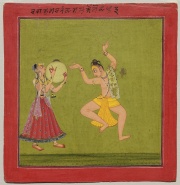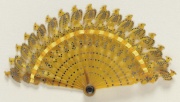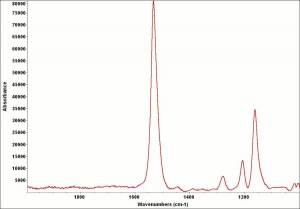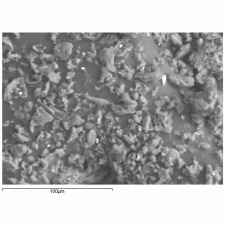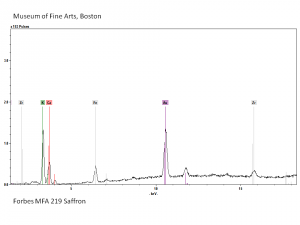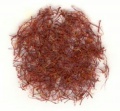Difference between revisions of "Saffron"
m (Text replace - "== Authority ==" to "== Sources Checked for Data in Record ==") |
|||
| Line 29: | Line 29: | ||
| − | == | + | == Sources Checked for Data in Record == |
* R. J. Gettens, G.L. Stout, ''Painting Materials, A Short Encyclopaedia'', Dover Publications, New York, 1966 | * R. J. Gettens, G.L. Stout, ''Painting Materials, A Short Encyclopaedia'', Dover Publications, New York, 1966 | ||
Revision as of 18:09, 1 May 2016
Description
A natural, golden yellow colorant obtained from the flower stigmas of the Crocus sativus plant that is native to the Middle East. Saffron was used to color the robes of emperors in ancient Persia and later, the robes of Buddhist monks in Asia. It was introduced to Europe through Spain in the 8th century and used in manuscript illumination until the 16th century. The deep yellow to orange color in saffron is primarily due to crocetin and crocin. The colorants are extracted by boiling the dried flowers in water. Saffron is a substantive dye that produces a strong yellow color on alum mordanted and unmordanted wool. Copper mordanting produces a greenish yellow shade. Saffron was used for manuscript illumination and for coloring prints and maps. The transparent colorant was also used as a watercolor pigment and a tint in varnishes. It is still used as a dyestuff and as a cooking spice.
Synonyms and Related Terms
Crocus sativus; Natural Yellow 6; CI 75100; karcom (Lat.); azafrán (Esp.); auripetrum colorant; safran (Fr., Dan.); safrankrokus (Dan.); Echter Safran (Deut.); zafferano (It.); safraan (Ned.); saffran (Sven.); szafran (Pol.); krokos bafikos (Gr.); zafora (Gr.); açafrão (Port.); crocin; crocetin; French saffron; zafran; crocus dye; red gold; vegetable gold
Other Properties
Crocetin is soluble in water, ethanol, alkali solutions. Crocetin forms a blue solution in concentrated sulfuric acid.
Additional Information
° J.Hofenk-de Graaf, Natural Dyestuffs: Origin, Chemical Constitution, Identification, Central Research Laboratory for Objects of Art and Science, Amsterdam, September 1969.
Additional Images
Sources Checked for Data in Record
- R. J. Gettens, G.L. Stout, Painting Materials, A Short Encyclopaedia, Dover Publications, New York, 1966
- R.J. Adrosko, Natural Dyes in the United States, Smithsonian Institution Press, Washington, DC, 1968
- Helmut Schweppe, Schweppe color collection index and information book
- Palmy Weigle, Ancient Dyes for Modern Weavers, Watson-Guptill Publications, New York, 1974
- John and Margaret Cannon, Dye Plants and Dyeing, Herbert Press, London, 1994
- F. Crace-Calvert, Dyeing and Calico Printing, Palmer & Howe, London, 1876
- Judith Hofenk-de Graaff, Natural Dyestuffs: Origin, Chemical Constitution, Identification, Central Research Laboratory for Objects of Art and Science, Amsterdam, 1969
- J. Thornton, 'The Use of Dyes and Colored Varnishes in Wood Polychromy', Painted Wood: History and Conservation, The Getty Conservation Insitute, Los Angeles, 1998
- Ralph Mayer, A Dictionary of Art Terms and Techniques, Harper and Row Publishers, New York, 1969 (also 1945 printing)
- Encyclopedia Britannica, http://www.britannica.com Comment: "saffron" Encyclopædia Britannica [Accessed March 5, 2002]. color photo of plant
- Wikipedia, the free encyclopedia, at http://www.wikipedia.com Comment: http://en.wikipedia.org/wiki/Saffron (Accessed Sept. 14, 2005)
- G.S.Brady, Materials Handbook, McGraw-Hill Book Co., New York, 1971 Comment: p. 60
- Colour Index International online at www.colour-index.org
- Van Nostrand's Scientific Encyclopedia, Douglas M. Considine (ed.), Van Nostrand Reinhold, New York, 1976
- The American Heritage Dictionary or Encarta, via Microsoft Bookshelf 98, Microsoft Corp., 1998
- Art and Architecture Thesaurus Online, http://www.getty.edu/research/tools/vocabulary/aat/, J. Paul Getty Trust, Los Angeles, 2000
